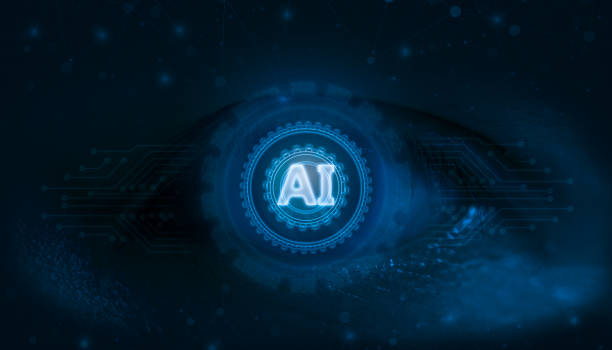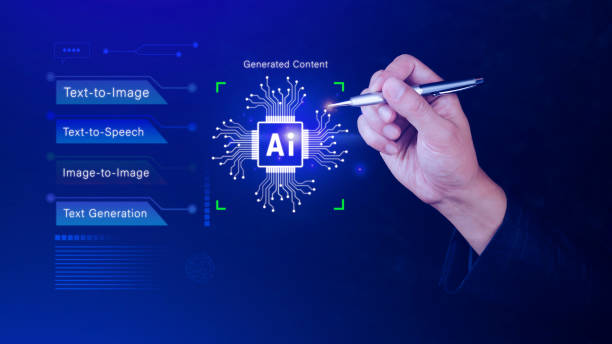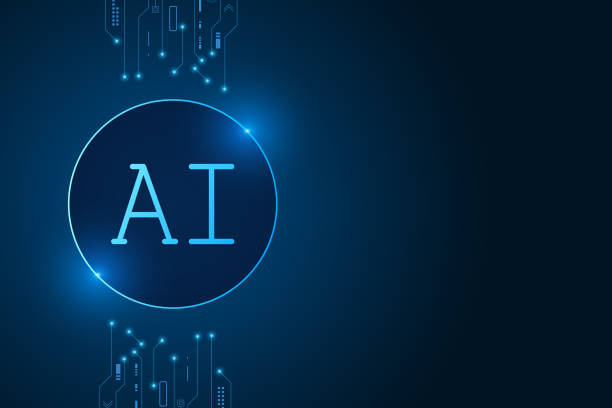What is an AI Robot? Key Definitions and Concepts
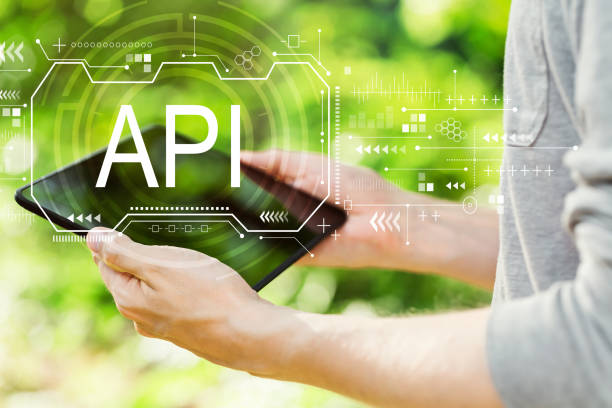
What is an AI Robot? Key Definitions and Concepts
An AI robot is a combination of two important technological fields: #robotics and #artificial_intelligence.
Simply put, an AI robot is a physical or virtual machine that, using artificial intelligence algorithms, is capable of performing tasks that typically require human intelligence.
These tasks can include learning, reasoning, problem-solving, pattern recognition, and decision-making.
By utilizing sensors and actuators, an AI robot can interact with its environment and perform physical or virtual actions.
For example, an AI robot can assemble parts in a factory or answer user questions as a virtual assistant.
The concept of an AI robot goes beyond a simple machine.
These robots are capable of adapting to new conditions and learning from their experiences.
This learning and adaptability make them a powerful tool for solving complex problems and performing diverse tasks.
AI robots are used in various fields, including industry, medicine, education, and customer services, and their role is expected to become more prominent in the future of human societies.
The use of AI robots in industry helps improve productivity and reduce costs.
In medicine, these robots can assist doctors in diagnosing diseases and performing precise surgeries.
In education, AI robots can act as private tutors, providing personalized education to students.
And in customer services, they can answer customer questions and resolve their issues.
Does your current e-commerce website design not generate the expected sales?
Rasaweb is an expert in professional e-commerce website design!
✅ An attractive and user-friendly website aimed at increasing sales
✅ High speed and security for an ideal shopping experience⚡ Get a free consultation on online store design with Rasaweb!
Main Components of an AI Robot
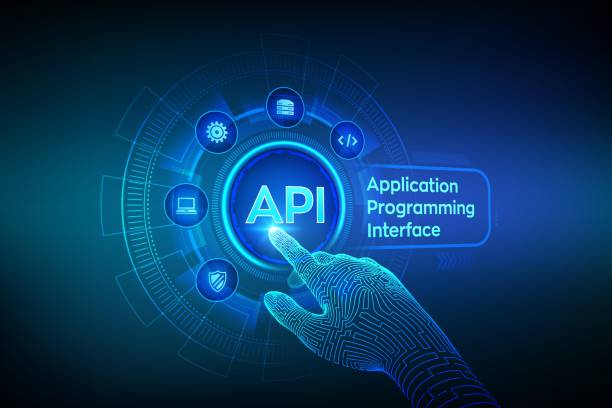
Main Components of an AI Robot
An AI robot consists of several main components that work together to enable it to perform various tasks.
These components include:
- Sensors: Sensors collect information about the surrounding environment.
This information can include visual, audio, tactile, or thermal data. - Processors: Processors process the data collected by sensors and make necessary decisions.
Processors use artificial intelligence algorithms for data analysis and reasoning. - Actuators: Actuators execute the commands from the processors and perform the necessary physical or virtual actions.
Actuators can include motors, arms, or various software programs. - Software: AI robot software includes artificial intelligence algorithms, control programs, and user interface.
Software is the beating heart of the robot and is responsible for controlling and coordinating its various components.
In addition to these components, an AI robot may include memory for data storage and energy for power supply.
The interaction of these components enables the AI robot to interact with its environment, learn from its experiences, and perform various tasks automatically.
For example, an AI robot designed for facial recognition uses a camera as a sensor to collect images of faces.
Then, the processor analyzes the images using facial recognition algorithms and identifies different faces.
Finally, the actuators may display information about the identified faces to the user or use this information to unlock a door.
Understanding these components and how they interact is essential for designing and developing efficient and effective AI robots.
Diverse Applications of AI Robots
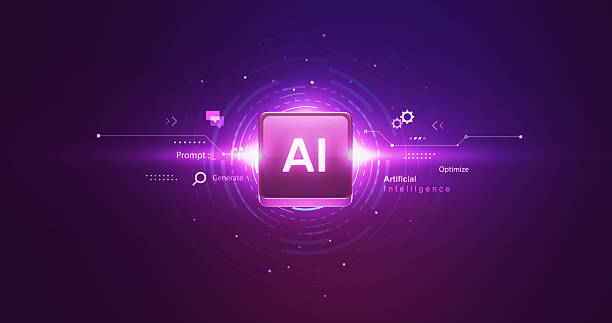
Diverse Applications of AI Robots
AI robots have diverse applications, and their role is expanding.
Some of the most important applications of AI robots include:
Industry: In industry, AI robots are used for process automation, component assembly, quality inspection, and material handling.
These robots can operate with high precision and speed, helping to improve productivity and reduce costs.
AI robots in this sector can work 24/7, reducing the need for human labor.
Medicine: In medicine, AI robots are used for disease diagnosis, performing precise surgeries, patient care, and rehabilitation.
These robots can identify disease patterns using medical data, assisting doctors in more accurate diagnoses.
Education: In education, AI robots can serve as private tutors, providing personalized instruction to students.
These robots can deliver educational content tailored to each student’s knowledge level and needs, helping them learn better.
AI robots provide instant feedback to students.
Customer Services: In customer services, AI robots can answer customer questions, resolve their issues, and provide necessary information.
These robots can be available 24/7, helping to improve the quality of customer services.
Agriculture: AI robots are used in agriculture for planting, tending, and harvesting crops, irrigation, and pest control.
These robots can accurately assess field conditions using sensor data and take necessary actions.
| Application Area | Example | Advantages |
|---|---|---|
| Industry | Assembly Robots | Increased speed and accuracy, reduced errors |
| Medicine | Surgical Robots | Minimally invasive surgeries, increased precision |
| Education | AI Private Tutors | Personalized learning, instant feedback |
| Customer Services | Chatbots | 24/7 responsiveness, reduced costs |
These are just a few examples of the diverse applications of AI robots.
With technological advancements, it is expected that the applications of these robots will expand in the future, and their role in our lives will become more prominent.
AI robots are becoming an integral part of our daily lives.
Advantages and Disadvantages of Using AI Robots
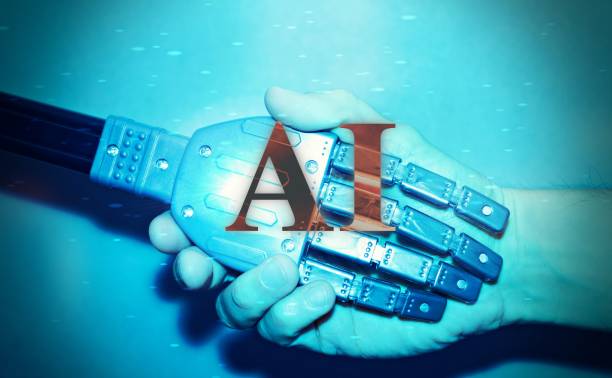
Advantages and Disadvantages of Using AI Robots
The use of AI robots, like any other technology, has its own advantages and disadvantages.
Understanding these pros and cons is essential for making informed decisions about the use of these robots.
Advantages:
- Increased Productivity: AI robots can perform tasks with higher speed and accuracy than humans, contributing to increased productivity.
- Cost Reduction: AI robots can reduce labor costs and help save expenses.
- Performing Dangerous Tasks: AI robots can perform dangerous and difficult tasks without risking human lives.
- 24/7 Access: AI robots can be available 24/7, assisting in providing services to customers.
- Error Reduction: AI robots can work with higher precision than humans, helping to reduce errors.
Disadvantages:
- Initial Cost: The purchase and deployment of AI robots can involve high initial costs.
- Maintenance and Repairs: AI robots require maintenance and repairs, which can be costly.
- Job Displacement: The use of AI robots can lead to job displacement for some individuals.
- Ethical Issues: The use of AI robots can raise various ethical concerns.
- Technological Dependence: Excessive reliance on AI robots can lead to technological dependence.
Considering the aforementioned advantages and disadvantages, it is necessary to consider various aspects when using AI robots and make informed decisions.
Responsible and intelligent use of AI robots can help improve the quality of human life and advance societies.
Did you know that 85% of customers check your company’s website before any interaction?
With Rasaweb, build a corporate website that truly reflects your credibility.
✅ Increase credibility and customer trust
✅ Attract high-quality leads
⚡ Get a free website design consultation!
Challenges Ahead in AI Robot Development
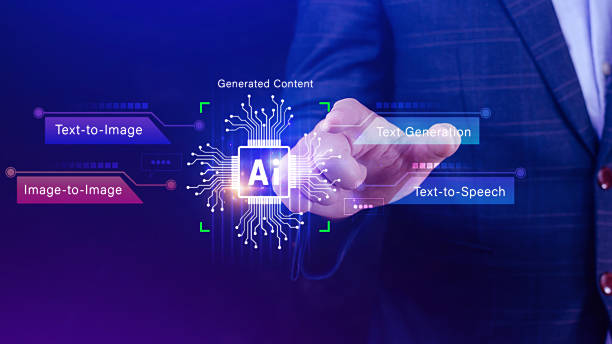
Challenges Ahead in AI Robot Development
The development of AI robots faces numerous challenges.
These challenges include:
Technical Challenges:
- Natural Language Processing: Understanding and processing natural language by AI robots is still a major challenge.
- Machine Learning: Improving machine learning algorithms to enhance the accuracy and efficiency of robots is essential.
- Sensory Perception: Developing more advanced sensors to gather more precise information from the surrounding environment is crucial.
- Motion Control: Improving robot motion control for performing complex and precise movements is necessary.
Ethical Challenges:
- Accountability: Determining responsibility in case of errors or harm caused by AI robots is a significant challenge.
- Privacy: Protecting the privacy of information collected by AI robots is essential.
- Bias: Preventing bias in AI algorithms to avoid discrimination is necessary.
- Security: Ensuring the security of AI robots against cyberattacks is crucial.
Social Challenges:
- Job Displacement: The use of AI robots can lead to job displacement for some individuals, necessitating retraining and the creation of new job opportunities.
- Inequality: Unequal access to AI technologies can lead to increased social inequalities.
- Trust: Gaining public trust in AI robots is essential for their widespread adoption and use.
Overcoming these challenges requires collaborative efforts from researchers, policymakers, and industry professionals.
By addressing these challenges, the potential of AI robots can be leveraged to improve the quality of human life and advance societies.
What to Expect from the Future of AI Robots
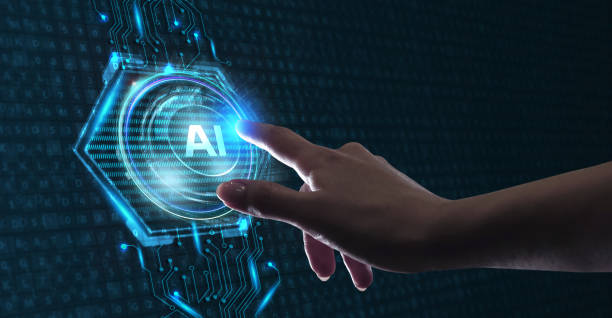
What to Expect from the Future of AI Robots
The future of AI robots is bright and full of potential.
This technology is expected to play a more significant role in our lives and bring about extensive transformations in various fields.
Trends:
- Increased Automation: AI robots are expected to be increasingly used in automating processes across various industries.
- Expansion of Applications: The applications of AI robots will expand into various fields, including medicine, education, customer services, and agriculture.
- Improved Capabilities: The capabilities of AI robots, including natural language processing, machine learning, and sensory perception, will improve.
- Cost Reduction: The costs of manufacturing and maintaining AI robots will decrease, making them more accessible.
Impacts:
- Increased Productivity: The use of AI robots will lead to increased productivity in various industries.
- Creation of New Job Opportunities: The development and maintenance of AI robots will create new job opportunities.
- Improved Quality of Life: The use of AI robots can help improve the quality of human life.
- Industry Transformation: AI robots will transform various industries.
Challenges:
- Ethical Issues: Ethical concerns related to the use of AI robots must be addressed, and appropriate solutions should be provided.
- Social Changes: The use of AI robots can lead to social changes that need to be managed.
- Security: The security of AI robots must be guaranteed to prevent their misuse.
The future of AI robots depends on our decisions and actions today.
Considering the advantages and disadvantages of this technology, we must strive to use it responsibly and intelligently to improve the quality of human life and advance societies.
An AI robot is a powerful tool that can be used for good or evil.
The choice is ours.
How to Build an AI Robot
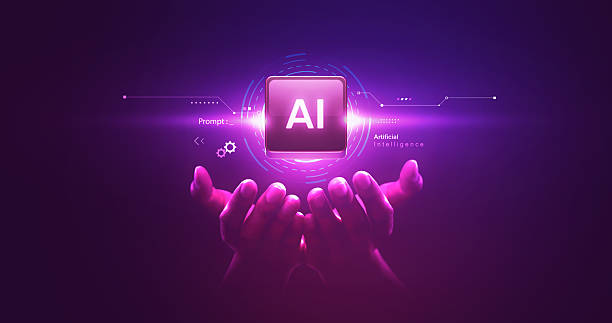
How to Build an AI Robot
Building an AI robot can be an exciting and challenging project.
This process requires knowledge and skills in various fields, including robotics, artificial intelligence, and programming.
Here’s a general guide for building an AI robot:
1.
Define the Goal:
First, you need to define the purpose of building your AI robot.
What is your robot going to do? Is it going to be a service robot, an industrial robot, or an educational robot? Defining the goal helps you better understand your needs and manage your resources more effectively.
2.
Choose Hardware:
After defining the goal, you need to select the appropriate hardware.
Hardware includes the physical components of the robot, such as sensors, actuators, processors, and power supply.
The choice of hardware depends on your goal and budget.
3.
Select Software:
The AI robot software includes artificial intelligence algorithms, control programs, and user interface.
The choice of appropriate software depends on your goal and technical knowledge.
Some popular software for building AI robots include ROS, TensorFlow, and PyTorch.
4.
Programming:
After selecting the hardware and software, you need to program your robot.
Programming involves writing code that controls the robot and allows it to perform its tasks.
For programming AI robots, languages such as Python, C++, and Java are commonly used.
5.
Testing and Improvement:
After programming the robot, you need to test it and improve its performance.
Testing involves evaluating the robot’s performance under different conditions and fixing potential bugs.
Improvement includes optimizing AI algorithms and enhancing the robot’s motion control.
| Step | Description |
|---|---|
| Define the Goal | Specifying the purpose of building the robot |
| Choose Hardware | Selecting appropriate physical components |
| Select Software | Choosing algorithms and control programs |
| Programming | Writing code to control the robot |
| Testing and Improvement | Testing and optimizing robot performance |
Building an AI robot is a complex process, but with effort and perseverance, you can build a functional and efficient AI robot.
Use online resources and available tutorials to learn more about building AI robots.
Key Tips for Designing an Efficient AI Robot
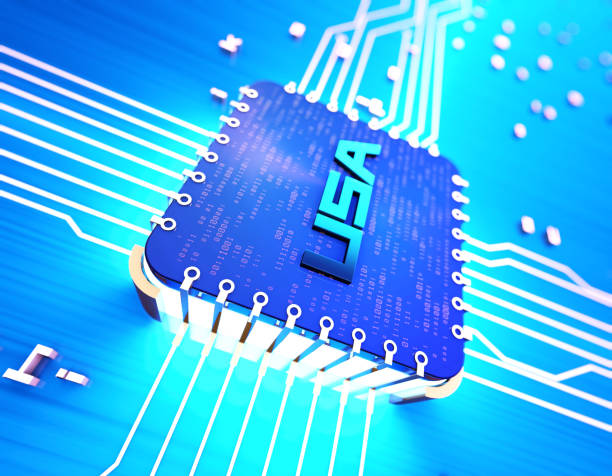
Key Tips for Designing an Efficient AI Robot
Designing an efficient AI robot requires attention to various key points.
These points include:
Precisely Define the Goal:
Before starting the design, you must precisely define the robot’s goal.
What is your robot supposed to do? What needs should it meet? A precise definition of the goal helps you design more effectively and manage your resources correctly.
Choose Appropriate Sensors:
Sensors play a crucial role in collecting information from the environment.
The selection of appropriate sensors depends on the robot’s goal and operating environment.
You should choose sensors that collect the required information with high accuracy and speed.
Optimize AI Algorithms:
AI algorithms are the brain of the robot.
Optimizing these algorithms is essential to increase the robot’s accuracy, speed, and efficiency.
You should choose algorithms that are well-suited to the robot’s goal and hardware.
Design a Suitable User Interface:
The user interface allows the user to interact with the robot.
Designing a suitable user interface is essential for ease of use and increased robot efficiency.
The user interface should be simple, clear, and user-friendly.
Continuous Testing and Evaluation:
After designing and building the robot, you must continuously test and evaluate it.
Testing involves checking the robot’s performance under various conditions and fixing potential bugs.
Evaluation involves assessing the extent to which defined goals and needs are met.
Security:
The security of AI robots is very important.
You must ensure that your robot is protected against cyberattacks and misuse.
Use strong encryption algorithms and restrict access to the robot.
Ethical Considerations:
When designing AI robots, ethical issues must also be considered.
Ensure that your robot respects human rights and prevents discrimination.
Designing an AI robot is a complex process, but by observing these key tips, you can design an efficient and useful AI robot.
Did you know that 85% of customers check your company’s website before any interaction?
With Rasaweb, build a corporate website that truly reflects your credibility.
✅ Increase credibility and customer trust
✅ Attract high-quality leads
⚡ Get a free website design consultation!
Common Misconceptions about AI Robots
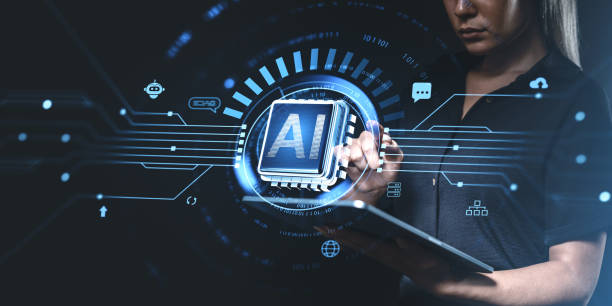
Common Misconceptions about AI Robots
AI robotics is an emerging technology about which many misconceptions exist.
Some of the most common misconceptions about AI robots include:
AI Robots Will Replace Humans:
This is a common misconception that AI robots will replace humans in the future.
While AI robots can automate many tasks, they cannot replace human creativity, empathy, and critical thinking.
AI robots primarily serve as tools to assist humans in performing their tasks.
AI Robots Are Always Accurate and Flawless:
This is also a misconception.
AI robots, like any other technology, can make errors.
The accuracy and efficiency of AI robots depend on the quality of the data and algorithms used.
If the data is incomplete or inaccurate, the robot may also make mistakes.
AI Robots Are Smarter Than Humans:
Currently, AI robots can outperform humans in specific areas, but overall, humans are more intelligent.
AI robots cannot think, be creative, or experience emotions like humans.
They can only execute the instructions they have been given.
Building an AI Robot Is Very Expensive:
While building complex and advanced AI robots can be expensive, simpler and more practical robots can be built at a lower cost.
Today, many tools and resources are available for building AI robots, which help reduce costs.
AI Robots Are Only Suitable for Industrial Applications:
This is also a misconception.
AI robots have applications in various fields, including medicine, education, customer services, and even entertainment.
AI robots can help improve the quality of human life in different areas.
By correcting these misconceptions, a more realistic perspective on AI robots can be gained, and their potential can be utilized more effectively.
AI robotics is a powerful technology that can contribute to the advancement of societies.
Further Learning Resources on AI Robots
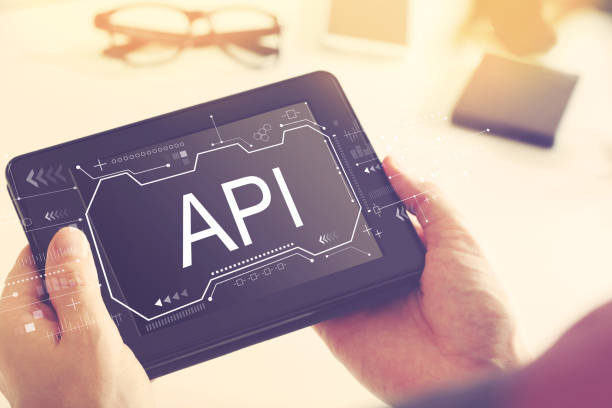
Further Learning Resources on AI Robots
If you are interested in learning more about AI robots, many resources are available to you.
These resources include:
Books:
There are many books on AI robots that you can use to learn the fundamentals and principles of this technology.
Some well-known books in this field include: “Artificial Intelligence A Modern Approach”, “Robotics Vision and Control”, and “Programming Robots with ROS”.
Online Courses:
Many online courses on AI robots are available that you can use to learn practical skills.
Some well-known platforms offering online courses include Coursera, edX, and Udacity.
Websites and Blogs:
Many websites and blogs about AI robots are available that you can use to get new and updated information.
Some well-known websites in this field include: Robotics.org, IEEE Robotics and Automation Society, and RobotShop.
Scientific Articles:
Many scientific articles on AI robots are available that you can use to learn advanced concepts and new research.
You can search for scientific articles in databases such as IEEE Xplore and ACM Digital Library.
Forums and Conferences:
Many forums and conferences on AI robots are available where you can participate and connect with other enthusiasts and experts in this field.
Some well-known conferences in this area include: IEEE International Conference on Robotics and Automation (ICRA) and Robotics Science and Systems (RSS).
By utilizing these resources, you can enhance your knowledge and skills in the field of AI robots and become an expert in this area.
Learning about AI robots is a continuous process, and you should always seek new and updated information.
Remember that AI robotics is a powerful tool that can contribute to the advancement of societies.
Frequently Asked Questions
| Question | Answer |
|---|---|
| What is an AI robot? | It is a robot that uses artificial intelligence capabilities to understand its environment, reason, learn, and make decisions to perform complex tasks autonomously. |
| What is the main difference between a regular robot and an AI robot? | AI robots can learn and adapt to their environment, while regular robots typically operate based on fixed, predetermined programming. |
| In what fields are AI robots used? | In fields such as industry (production lines), medicine (robotic surgeries), services (customer support, smart vacuum cleaners), exploration (space and underwater), and entertainment. |
| How do AI robots learn? | They acquire new skills through Machine Learning and Deep Learning algorithms, by analyzing large datasets and identifying patterns. |
| Can AI robots have emotions? | Currently, no. They can identify or simulate emotions, but they do not have the real experience of emotions like humans. |
| What are the most important advantages of using AI robots? | Increased productivity, reduced human error, performance of dangerous or repetitive tasks, and provision of innovative and efficient services. |
| What challenges exist in the development of AI robots? | The need for abundant and high-quality data, complexity of algorithms, ethical issues, cybersecurity, and high research and development costs. |
| Are AI robots dangerous for humans? | With adherence to safe design principles and ethical regulations, no. Concerns are more related to social and economic impacts such as changes in the job market. |
| What is an example of an AI robot in daily life? | Smart vacuum cleaner robots (like Roomba) that automatically map and clean the house, or smart voice assistants (like Siri and Alexa). |
| How is the future of AI robots predicted? | They are expected to become smarter, more autonomous, and capable of more complex interactions with humans, playing a more prominent role in industry, medicine, transportation, and daily life. |
And other advertising services from Rasa Web advertising agency:
- Smart Website Development: A professional solution for online growth with a focus on SEO-driven content strategy.
- Smart Google Ads: A creative platform for improving customer behavior analysis with intelligent data analysis.
- Smart Conversion Rate Optimization: A dedicated service for increasing user engagement based on Google advertising management.
- Smart Digital Branding: Designed for businesses seeking customer acquisition through marketing automation.
- Smart Marketplace: Designed for businesses looking for online growth through intelligent data analysis.
And more than a hundred other services in the field of internet advertising, advertising consulting, and organizational solutions.
Internet Advertising | Advertising Strategy | Advertorial
Resources
What is an AI Robot?
The Future of Smart Robots in the World
Everything About AI Robots and Their Applications
AI Robot – Wikipedia
? For significant business growth in the digital world, Rasaweb offers you comprehensive digital marketing solutions. With our professional services, from WordPress website design to SEO and social media management, experience a powerful and impactful presence.
📍 Tehran, Mirdamad Street, next to Bank Markazi, Southern Kazeroon Alley, Ramin Alley, No. 6

